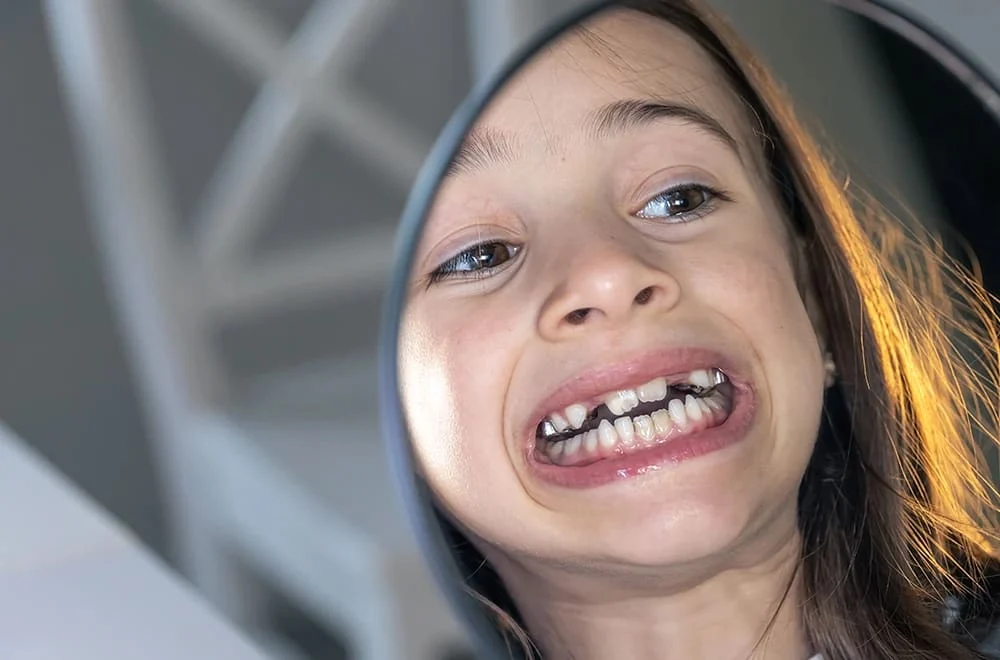Crooked teeth are more prevalent than you may realize, and they can become crooked due to a multitude of different reasons. Whether it’s mild crookedness or extreme crowding, the majority of people want to try to fix this and get back their winning smile. Knowing the causes of crooked teeth, if you’re looking to have Invisalign in Santa Clarita, it could be helpful and influence your choice on treatment as well as prevention.
From genetic characteristics to childhood behaviors, crooked teeth can have any number of explanations. In this blog post, we’re going to cover the most common reasons, debunk some of the most common questions, such as “Are crooked teeth genetic?” and give advice on what you can do if you have crooked teeth.
Are Crooked Teeth Genetic?
Yes, genetics tend to have a lot of influence when it comes to dental alignment. If either or both parents had gapped, crowded, or crooked teeth, there’s more likelihood their children will also get these kinds of problems. Inherited jaw size and shape may cause overcrowding or spacing issues that play a part in causing misalignment.
Other times, some individuals are born with additional teeth, missing teeth, or abnormal chewing patterns (overbite, underbite, crossbite), and all of those conditions can be traced back to family lineage and multiply the chances for crooked teeth.
What Are the Causes Of Crooked Teeth?
While genetics are the major factors, they’re not the only reason teeth can become misaligned. Several external and behavioral factors can influence the way your teeth grow and shift:
Thumb Sucking And Pacifier Use
Prolonged thumb sucking or pacifier use beyond the age of 3–4 can apply pressure to developing teeth and jaws. This may lead to the teeth shifting outward, creating misalignment or a protruding appearance.
Tongue Thrusting
This habit involves pushing the tongue against the teeth when swallowing or speaking. Over time, tongue thrusting can move teeth out of alignment, especially the front teeth.
Mouth Breathing
Chronic mouth breathing, often due to allergies or enlarged tonsils, can impact facial and dental development. It may cause the upper jaw to grow narrow and increase the risk of crowding and misalignment.
Premature Loss Of Baby Teeth
Baby teeth act as placeholders for adult teeth. When they fall out too early due to decay or trauma, the surrounding teeth may shift into the empty space. This shift can block the path for incoming permanent teeth, causing them to erupt crooked.
Poor Dental Habits Or Hygiene
Neglecting oral hygiene can lead to gum disease, which weakens the supporting structures of the teeth. This can cause teeth to loosen or shift out of place over time.
Trauma Or Injury
Accidents that impact the mouth or jaw may disrupt tooth alignment. Teeth can be pushed out of position, or new teeth may erupt incorrectly due to the trauma.
What Can You Do If You Have Crooked Teeth?
The good news is, whether your misalignment is genetic or caused by external factors, modern orthodontics offers a wide range of treatments. Here are a few options:
Braces
Conventional metal braces near you remain a highly reliable solution for straightening misaligned teeth. They work by applying gentle pressure through brackets and wires to guide teeth into alignment over time. Modern designs have made braces more discreet and comfortable than in the past.
Invisalign
Invisible aligners such as Invisalign provide a subtle and convenient option compared to conventional braces. They’re removable, nearly invisible, and can be just as effective for treating mild to moderate misalignment. Invisalign is a popular option for teens and adults who want to straighten their teeth without the look of metal.
Retainers And Space Maintainers
In some cases, a retainer can help maintain or make minor adjustments in alignment, especially in children. Space maintainers may also be used when baby teeth fall out prematurely to prevent crowding.
Early Orthodontic Evaluation
According to the American Association of Orthodontists, children should receive their initial orthodontic assessment by the age of 7. Early assessment allows for timely intervention and may reduce the need for more intensive treatment later on.
Why Treatment Matters?
Crooked teeth aren’t just a cosmetic issue; they can impact your oral health. Crooked teeth can make thorough cleaning difficult, which raises the chances of cavities and gum infections. They can also cause bite problems, jaw pain, and speech difficulties.
Correcting crooked teeth can lead to improved function, better hygiene, and enhanced self-confidence. Whether you choose traditional braces or Invisalign, straightening your teeth can lead to lifelong benefits.
Take the First Step Toward A Confident Smile – Book Now!
Crooked teeth can result from genetics, childhood habits, injuries, or oral health issues, but they don’t have to be permanent. With the right orthodontic treatment, you can enjoy a healthier, straighter smile.
At Smile Republic Orthodontics, we specialize in personalized care tailored to every age and need. Whether you’re interested in Invisalign in Santa Clarita, looking for braces near you, or simply want to consult an orthodontist near you, our friendly team is here to help guide you through the process.

